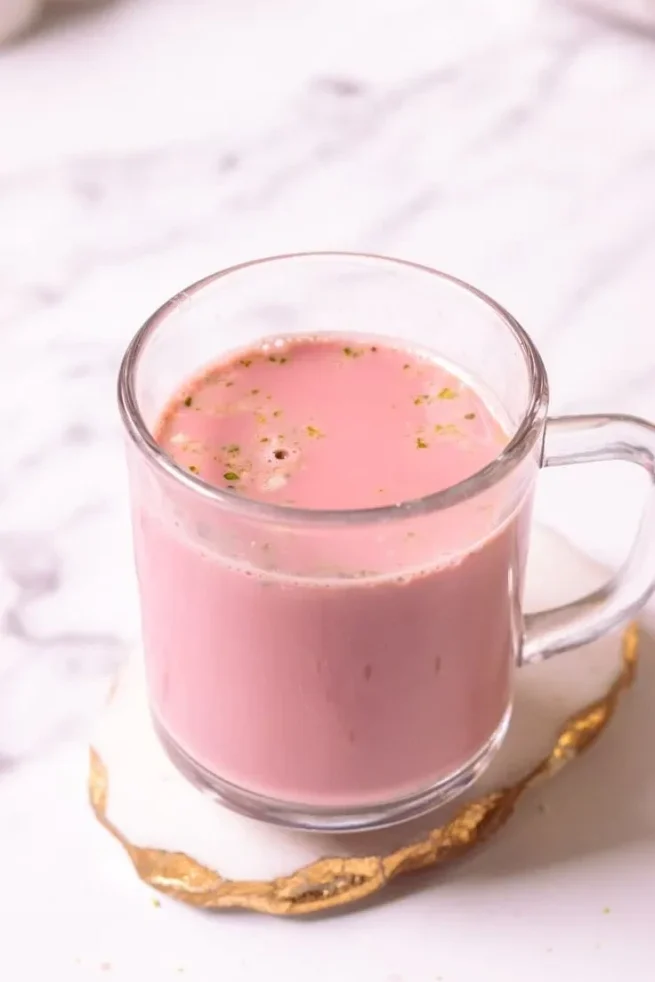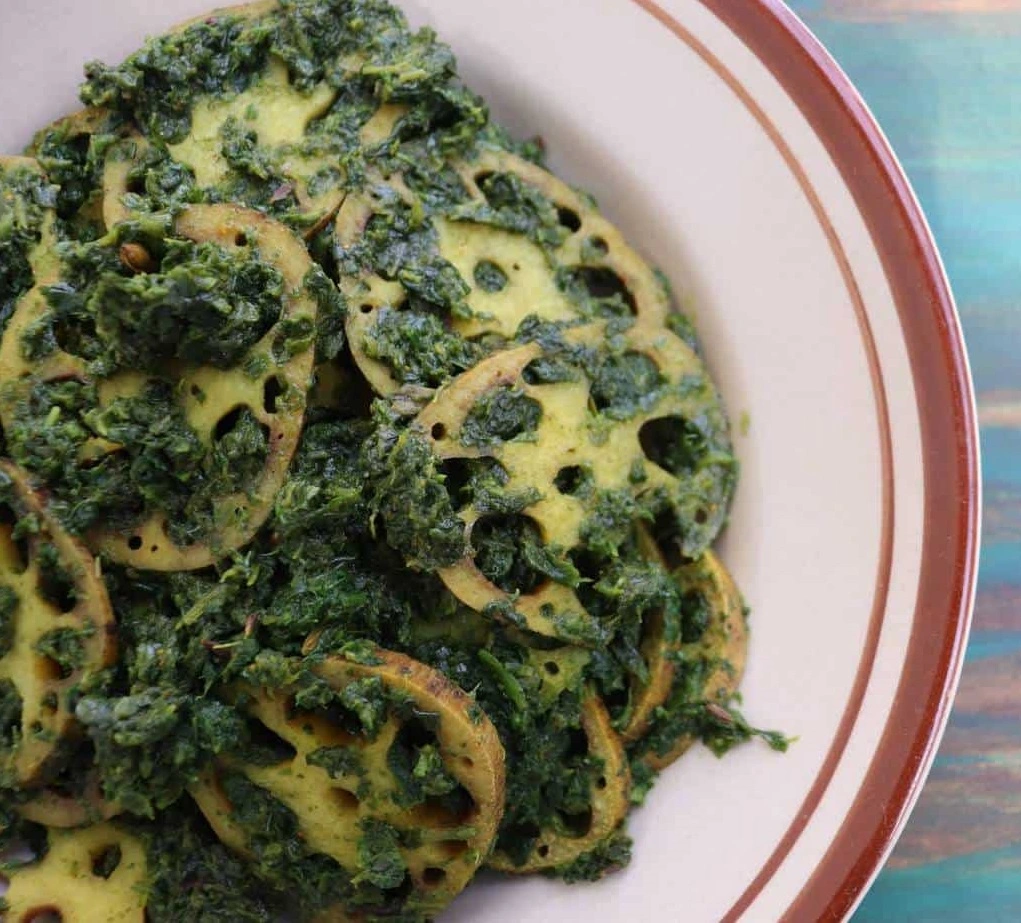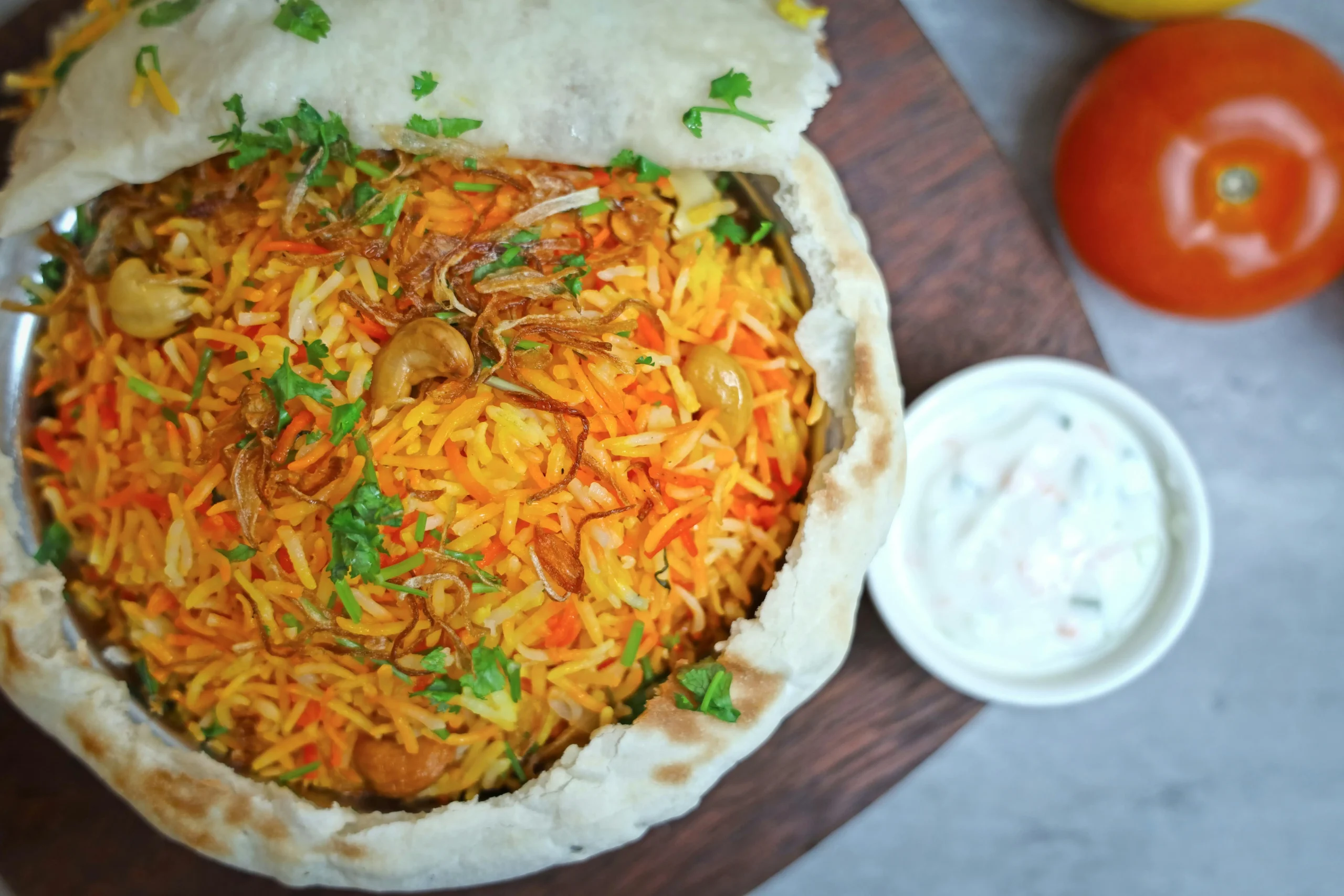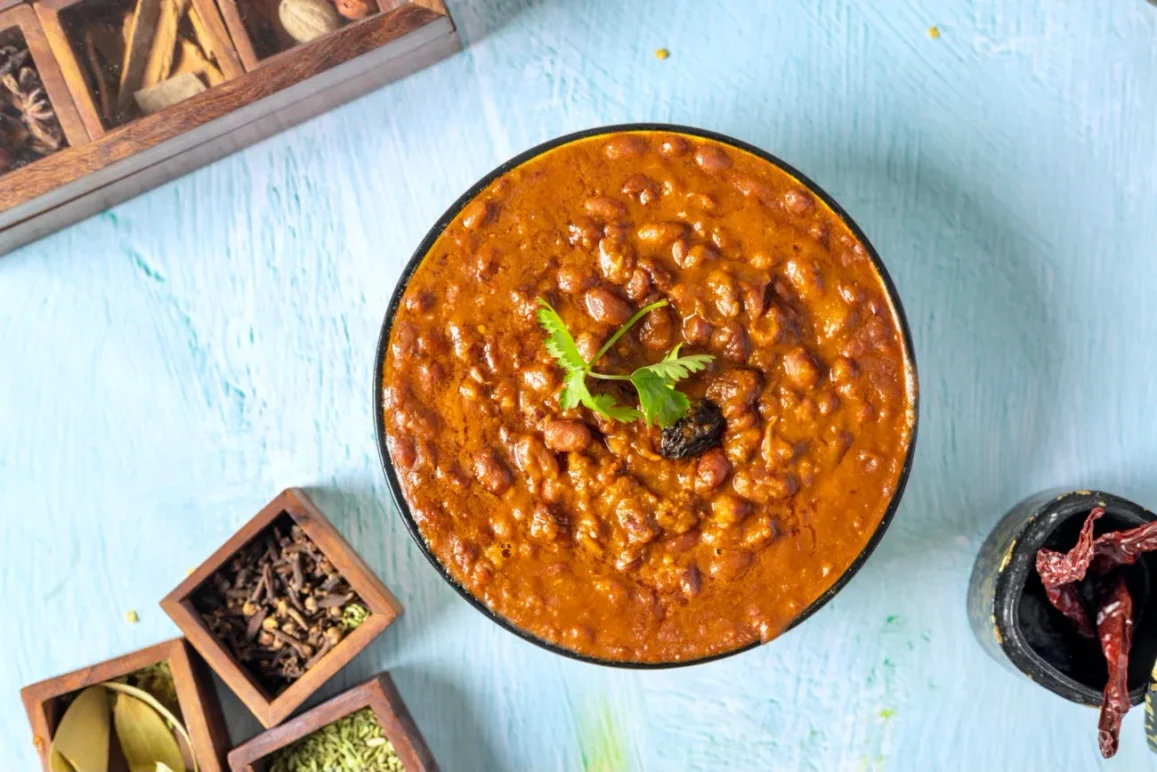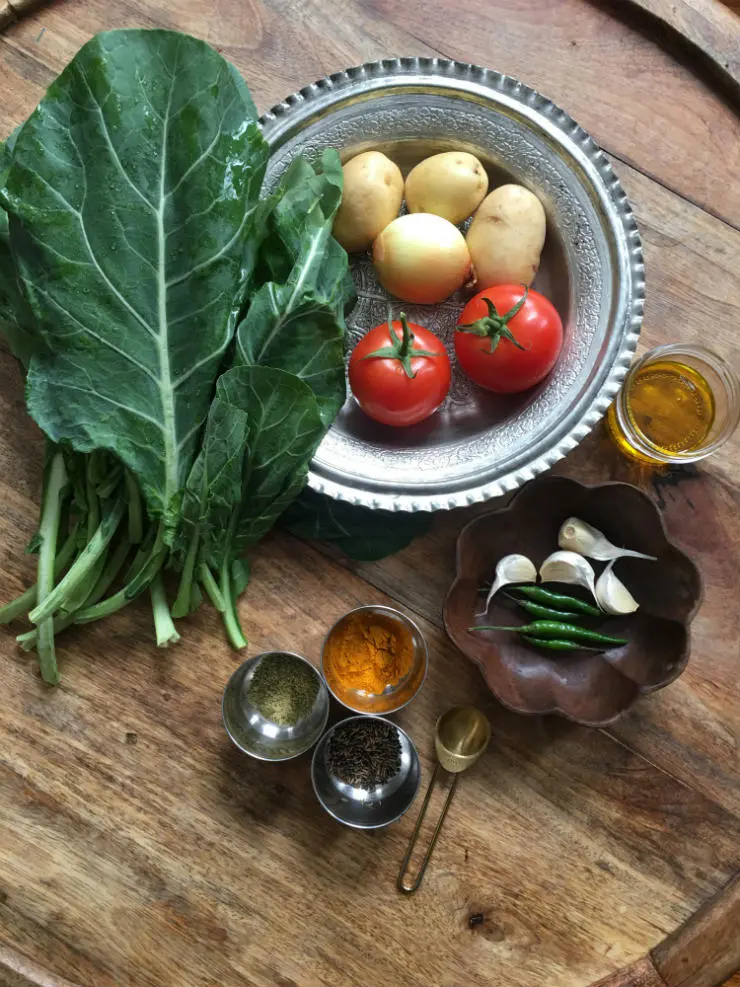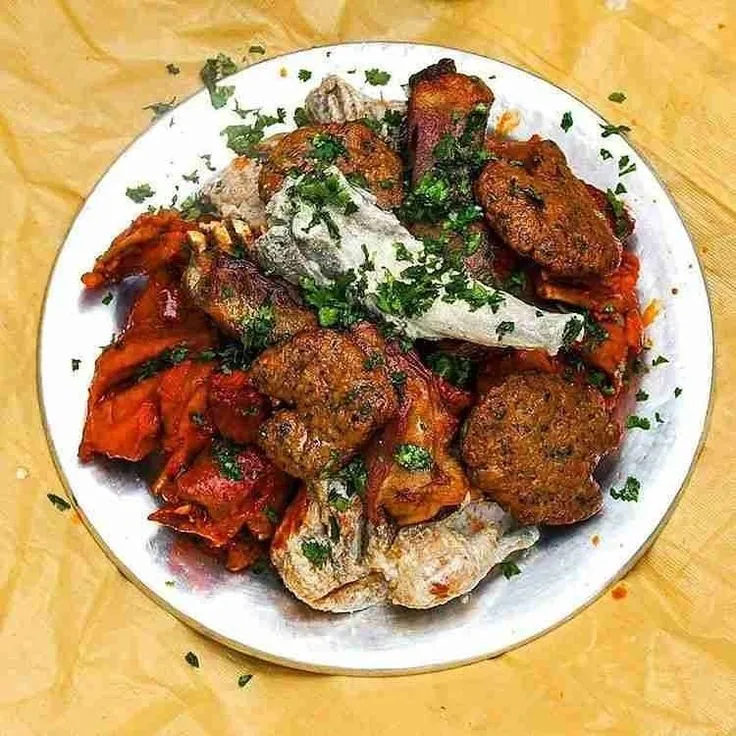In the peaceful valleys of Kashmir, where mighty, snow-covered mountains kiss the clouds and the air is heavy with the murmurs of ancient stories, a steaming cup of Noon Chai does not only provide comfort, but is a bubbling blend of tradition, culture, and togetherness.
A Sip Through Time
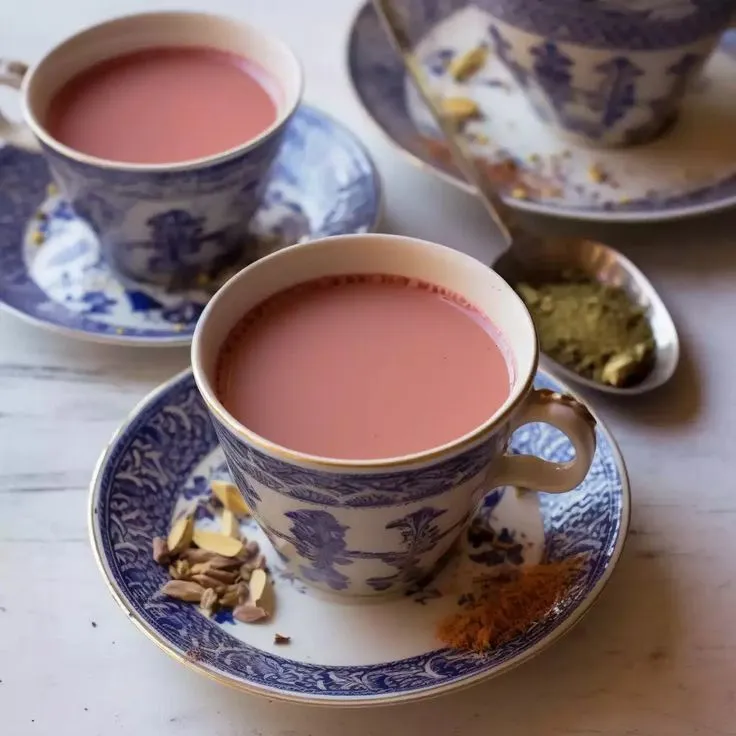
The origins of Noon Chai are as rich and layered as its flavor. Some believe that it was brought to Kashmir by the 14th-century Persian Sufi saint Mir Syed Ali Hamdani, along with many other cultural influences, one of which was this strange tea. Then over time Kashmiris modified the tea, subbing butter for milk and cream and making a blend that was more suited to their own taste.
Cultural Significance of Noon Chai
In Kashmiri tradition, Noon Chai represents more than just a beverage. It carries the spirit of hospitality and fellow feeling. It is served with local bread, such as kulcha, girda, or tsochwor, to share during breakfasts and evening gatherings. As a testimony to the richness of tradition in the region, the making of noon chai are deeply woven into social customs, festive occasions, and family get-togethers.
Health Benefits of Noon Chai
Aside from its unique taste, Noon Chai has other benefits to one’s health:
- Rich in Antioxidants: Catechins, which combat oxidative stress and can decrease the risk of chronic diseases, are abundant in the green tea leaves used.
- Cardiovascular Health: Green tea and milk complement each other to decrease LDL cholesterol and manage blood pressure when taken daily.
- Digestive Aid: Noon Chai’s baking soda and salt are believed to facilitate healthy digestion and electrolyte levels.
- Bone Strength: the nutrients of this tea, such as magnesium, potassium, and vitamin C, foster healthy bones.
Global Variations and Adaptations
With Noon Chai growing increasingly popular globally, a few adaptations have emerged:
- Sweetened Versions: To satisfy different palates, sugar is added in some regions.
- Plant-Based Alternatives: Almond or cashew milk can be used in place of regular milk for people who are allergic to dairy products, providing a vegan alternative.
- Fusion dishes: These creative dishes combine traditional and contemporary culinary techniques by incorporating Noon Chai flavours into desserts like cakes and ice cream.
Traditional Brewing Equipment: The Samovar
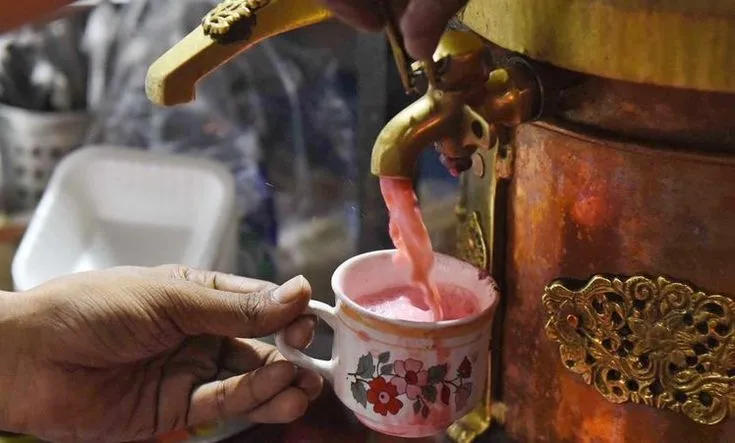
The samovar, a metal urn traditionally used to brew and warm the tea, is an essential part of preparing authentic Noon Chai. Beyond its functional purpose, the samovar also has cultural significance and is often passed down as a family heirloom over generations.
The Alchemy Behind the Pink
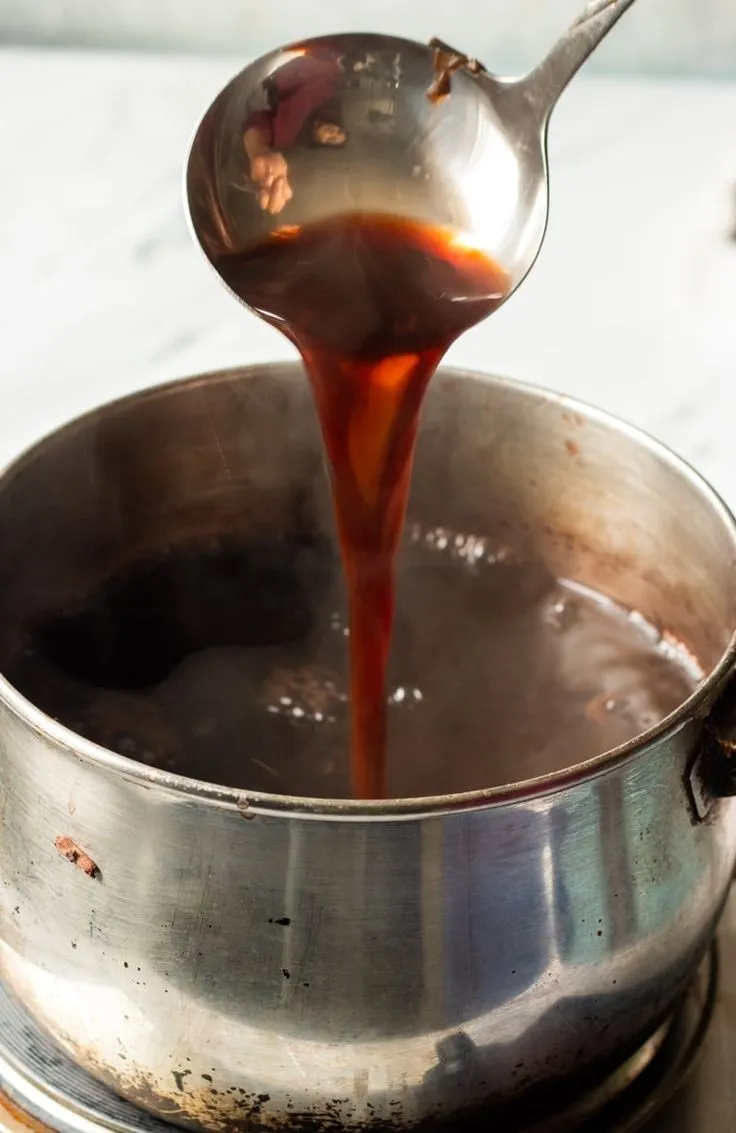
The idea of a rose-colored, salty tea might strike one as odd at first. But the process by which green tea is converted into this rose blend is a fascinating intersection of history and chemistry.
Noon Chai (Kashmiri Pink Tea) Recipe
Ingredients:
- 2 teaspoons Kashmiri green tea leaves (“Bombai Chai” if possible)
- 1 pinch baking soda (about 1/8 teaspoon)
- 2½ cups cold water
- ½ cup cold water (for shocking)
- 1⅔ cups whole milk
- 1 teaspoon salt
Optional garnishes: chopped almonds, pistachios, or a dollop of whipped cream
Instructions:
Prepare the Tea Base:
- Add a pinch of baking soda, one teaspoon of ground green cardamom seeds, and two teaspoons of Kashmiri green tea leaves.
Cover the saucepan with a lid and let it simmer for ten to fifteen minutes. The tea and baking soda will react, imparting a deep red color to the water.
Shock the Tea:
- After it has simmered, add ½ cup of cold water. This sudden change in temperature helps in color stabilization.
- After straining the tea to remove the leaves, return the liquid to the pot.
Add Milk:
- The tea concentrate should be blended with 1⅔ cups of whole milk.
- Reheat the mixture until it boils, then reduce the heat and let it gently simmer for another 10 to 15 minutes. The characteristic pink color of Noon Chai is created by the combination of the burgundy tea and milk.
Season the Tea:
- Add 1 teaspoon of salt to the tea and mix well.
- Taste and adjust the salt as needed.
Serve:
- Serve the Noon Chai in cups.
- For a bit of added richness, garnish with chopped pistachios, almonds, or a spoonful of full-fat cream.
Tips:
- Tea Leaves: The colour and flavour are enhanced by using high-quality Kashmiri green tea leaves, such as the gunpowder type.
- Baking Soda: Just a small amount is essential to create the signature pink hue of noon chai. Don’t use more than is required because it can impart a soapy flavour to the food.
- Milk: Almond or cashew milk can be substituted in for a dairy-free option, but whole milk provides a creamy texture.
- Aeration: To aerate it and provide a frothier consistency, pour the tea back and forth between two containers before serving.
Traditionally, Noon Chai is made in a samovar, a metal urn that maintains the temperature of the tea for hours, enabling families to serve multiple cups over the course of a day.
More Than Just a Beverage
In Kashmiri homes, noon chai is more than just a beverage—it’s a cherished cultural experience. It’s being served with breakfast and tea parties in the afternoon and regularly offered with native breads of tsochwor, girda, or kulcha. Consumption of this tea is a uniting experience.
Beyond its daily enjoyment, noon chai holds deep ceremonial importance in Kashmiri tradition. It symbolizes hospitality and a rich history of Kashmir and is a staple during weddings, festivals, and other celebrations.
A Modern Twist on Tradition
Modern versions have been created to fit contemporary lifestyles, although the old school preparation of Noon Chai is a labor of love. Easy recipes that incorporate pressure cookers or other shortcuts allow enthusiasts everywhere to experience this unique tea without compromising its foundational integrity.
In addition, Noon Chai has also been popularized by the worldwide diaspora, with the result being innovative versions such as sweeter ones in Pakistan or vegan ones prepared with cashew or almond milk.
Embracing the Pink Brew
In a world filled with coffee shops and new-age drinks, Noon Chai is a testament to the long lasting charm of tradition. Its distinctive taste profile, a perfect blend of savory and creamy notes, is a comforting hug, particularly on cold days.
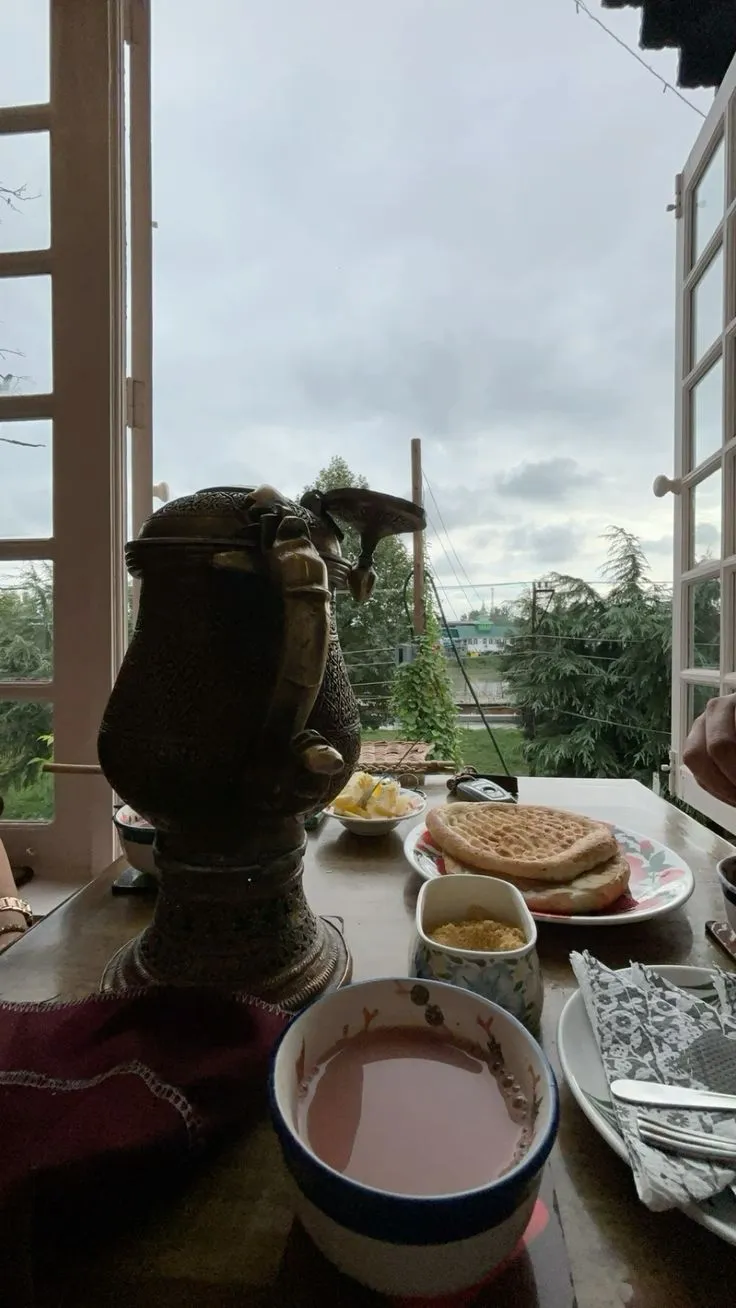
So the next time you turn to a cup for warmth, try the pink elixir of Kashmir. Let Noon Chai take you to snow-covered valleys filled with stories of heritage, community, and eternal rituals.

